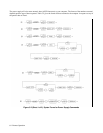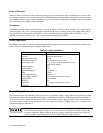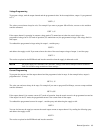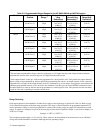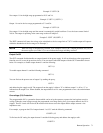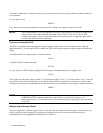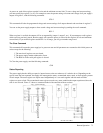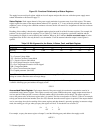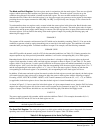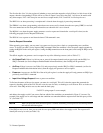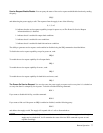
Remote Operation72
To enable an output after it went into overvoltage, you must first remove the overvoltage condition and then send the OV
reset command.
To reset output 1 send:
OVRST 1
If you send the reset command without first removing the OV condition, the supply will fire the OV again.
NOTE If the programmable OV fails, the supply has a fixed OV circuit which will fire the SCR crowbar if the
voltage exceeds 120% of the maximum rated output. The fixed OV circuit will also fire the SCR
crowbar if the supply is off (line cord disconnected) and an external source is supplying voltage which
exceeds 120% of the maximum rated output.
Overcurrent Protection (OCP)
The OCP is a protection feature employed by the power supply to guard against excessive output currents. When the
output enters the + CC mode and the OCP is enabled, the OCP circuit down programs the output voltage and disables the
output.
To enable the OCP, for output channel 1, send the command
OCP 1,1
To disable the OCP, send the command
OCP 1,0
You can find out the OCP setting by sending the following query and addressing the power supply to talk.
OCP? 1
The response from the power supply is either a "0" to indicate that OCP is off or a ''1" to indicate that it is on. To reset the
output channel after an overcurrent trip, you can either disable the OCP and send the reset command, or you can reduce
the output current below the programmed current and then send the reset command. To reset output 1, send the command:
OCRST 1
NOTE The supply can report a fault condition when an output is in overvoltage or overcurrent. Although the
OVRST and OCRST commands reenable the output, they do not clear the fault register. As a
housekeeping measure, it is advisable to always clear the fault register by querying its value after an OV
or OC reset.
Multiple Output Storage & Recall
The power supply has 10 internal registers each of which can store the voltage and current settings of all the outputs. By
storing voltage and current settings for all outputs and recalling them later, you can have significant savings in
programming time. (See Supplemental Characteristics in Table 1-1).



